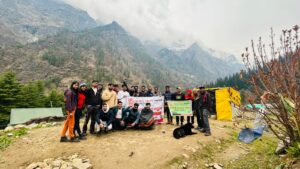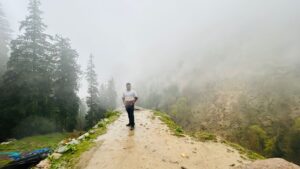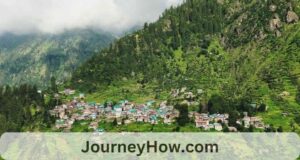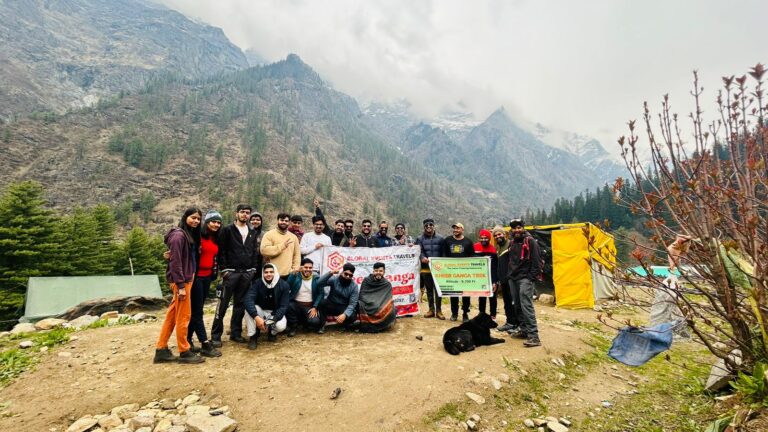Manikaran may seem unassuming at first glance, yet this tiny hill station offers many captivating experiences for both tourists and devotees alike. From its revered Gurudwara to a purifying hot spring believed to rid individuals of any sinful spirits – Manikaran offers something spectacular in its small footprint.
Legends link Manikaran with Lord Shiva and Goddess Parvati. These geothermal wonders draw pilgrims from across the globe.
1. Visit the Gurudwara

Manikaran Sahib, situated in Himachal Pradesh’s Parvati Valley, is one of the most revered pilgrimage sites for both Sikhs and Hindus alike. Renowned for its hot springs, gurudwaras, and ancient temples – Manikaran Sahib offers visitors an opportunity to soak up divine energy while seeking blessings! A visit here offers you an experience unlike any other!
Legend states that Guru Nanak Dev Ji visited this holy Himalayan destination to ensure the welfare of its people. According to Giani Gian Singh’s Bhai Bala Janam Sakhi or “Twelfth Khalsa,” he stopped here en route from Kalanaur via Gurdaspur, Dasuya and Triloknath with Bhai Mardana as his disciple. At Jwalamukhi from Kalanaur he asked his disciples to raise up a stone which revealed a hot water pool which led them back here, hence making Jwalamukhi an important site of pilgrimage among Sikhs today.
The Gurdwara houses a large hall that serves langar to visitors paying their respects at the shrine, as well as a bathing section with hot springs to help cleanse themselves of sins accumulated throughout their day and offer cleansing experiences believed to have medicinal properties.
One of the best times to visit this sacred abode is during April to June when temperatures are pleasant and clear, offering tourists ample opportunity to participate in all the activities available at gurudwaras and take full advantage of Himalayan scenery in full bloom – providing a magnificent setting for spiritual practices and practices.
Gurdwaras have kitchens that offer free meals to pilgrims visiting. Here, meals made of staple Indian grains such as urad dal and rice are considered healthier alternatives to those available at restaurants; delicious prasadam is served on banana leaves too.
2. Take a dip in the hot springs

Manikaran is located close to Kasol, known for its hippie community and scenic natural hot springs. These springs are believed to have healing properties and relief for various ailments; emerging from deep fissures in the earth’s crust they are powered by geothermal energy to stay at an ideal temperature year round.
Manikaran, known for its Sikh religious sites and pilgrimage spots such as Gurudwara of Manikaran Sahib, attracts numerous devotees year round. Legends and tales connected to Manikaran have given it special status among Sikh communities worldwide. One legend states that Guru Nanak Dev Ji once visited this area with his disciple Bhai Mardana and instructed him to collect food for langar (community kitchen). Mardana collected many ingredients but due to a lack of fire was unable to prepare them – Guru Nanak then ordered him to place all uncooked food into hot springs where it then emerged all cooked and ready to eat – a testament to prayer’s power and the value of giving in God’s name. This miracle is seen as proof that prayer’s power as well as importance – an unforgettable demonstration that signifies power of prayer as an encouragement of giving in God’s name!
According to legend, Goddess Parvati, wife of Lord Shiva, became charmed with this place and decided to stay for 1100 years. Unfortunately, during that time she lost her precious gem (Mani) into a stream and became distraught at having lost it. When Shesh Nag attempted to claim Mani from Lord Shiva through dance Tandav, springs formed out of its spilled waters which bore jewels similar to Parvati’s glory adorning it and gave Manikaran its name.
Manikaran became a place of spiritual significance to both Hindus and Sikhs alike, and attracted numerous pilgrims and travelers seeking peace. Thanks to its peaceful surroundings and miraculous legends associated with it, many consider this town of Manikaran a site of miraculous events. With a vibrant tourism industry supporting it and an active mythos surrounding its existence, Manikaran continues its legacy as a beacon of shared spirituality in Himachal Pradesh’s hills.
3. Cleanse yourself in the Kulant Pith

Kulant Pith is an incredible natural hot spring with unique geothermal energy, offering stunning panoramic views over Manikaran. Boiling at between 86-96 degrees Celsius, many consider Kulant Pith to be an effective treatment option for rheumatism. Soak in this steaming water to cleanse both mind and soul – you will emerge feeling invigorated and renewed! Enjoy its tranquil ambiance; large sun kissing mountains on one side while the Parvati River on the other will soothe nerves.
This idyllic spot has many legends attached to it. One such legend describes Lord Shiva and Goddess Parvati becoming drawn to its tranquil environment and deciding to stay for 1100 years, during which shesha-Nag stole Goddess Parvati’s earring from her riverbank and made Shiva angry, forcing him to perform Tandava (cosmic dance) dance so Shesha-Nag would hiss, creating boiling waters where gems similar to Goddess Parvati appeared and gave rise to Manikaran (gem, ear). Thus giving birth to Manikaran (gem, ear).
Guru Nanak Dev Ji, with his disciple Bhai Mardana in tow, arrived in this town intending to set up a langar (community kitchen). However, due to lack of fire in this location they could not cook any food due to no fire being present – until Guru Nanak Dev Ji instructed Mardana to lift a stone off of the ground which resulted in the discovery of a spring that provided them with plenty of hot boiling water!
Sulphurous spring water in Manikaran contains healing properties and is used to prepare food in Gurdwaras and langar halls. Many believe that eating food prepared using this water can transport one to Vishnu Lok and cure various ailments – this explains why langar served here is considered divine. Do you want to experience this incredible place first hand? Mistay offers hourly hotel accommodations in Manikaran so that you can explore this mystical spot!
4. Trek to Harinder Mountain

Manikaran is famed for its hot sulphur springs, making it an appealing pilgrimage site and offering rejuvenation. Home to both temples dedicated to Rama and Shiva and Sikh Gurudwaras, as well as popular destination spots, Manikaran offers visitors a refreshing break and is representative of India’s multifaceted culture.
A Gurdwara is a place of worship where visitors pay their respects to Guru Granth Sahib and find solace in its wisdom. Beyond its religious experience, it also provides some delectable Atta Halwa prasad. Furthermore, hot springs found inside this beautiful religious building can even be used to cook rice – something visitors are encouraged to experience themselves! Sulphurous and radioactive materials found within these springs give rise to healing powers within its walls.
To take in the scenic beauty of this region, try hiking up Harinder Mountain. Though the journey to its summit may be challenging, its rewards are undeniable: stunning views of surrounding peaks can be seen along with glimpses of Parvati River glistening in the distance. To maximize your experience on this trek, begin early enough in the morning so you can catch a glimpse of sunrise over snow-covered peaks.
After witnessing an unforgettable sunrise, you can enjoy a hearty breakfast before returning to your village. Once there, explore other fascinating sites nearby such as Kulant Pith and Pandapul; these two incredible spots feature temples dedicated to Lord Rama and Sita while Kulant Pith is believed to provide relief from anger or evil by taking a dip in its waters.
Manikaran is a beautiful blend of spirituality and natural splendor that’s worth exploring. Just 4km away from Kasol, it offers numerous activities that are sure to appeal both pilgrims and active adventurers alike.


























+ There are no comments
Add yours